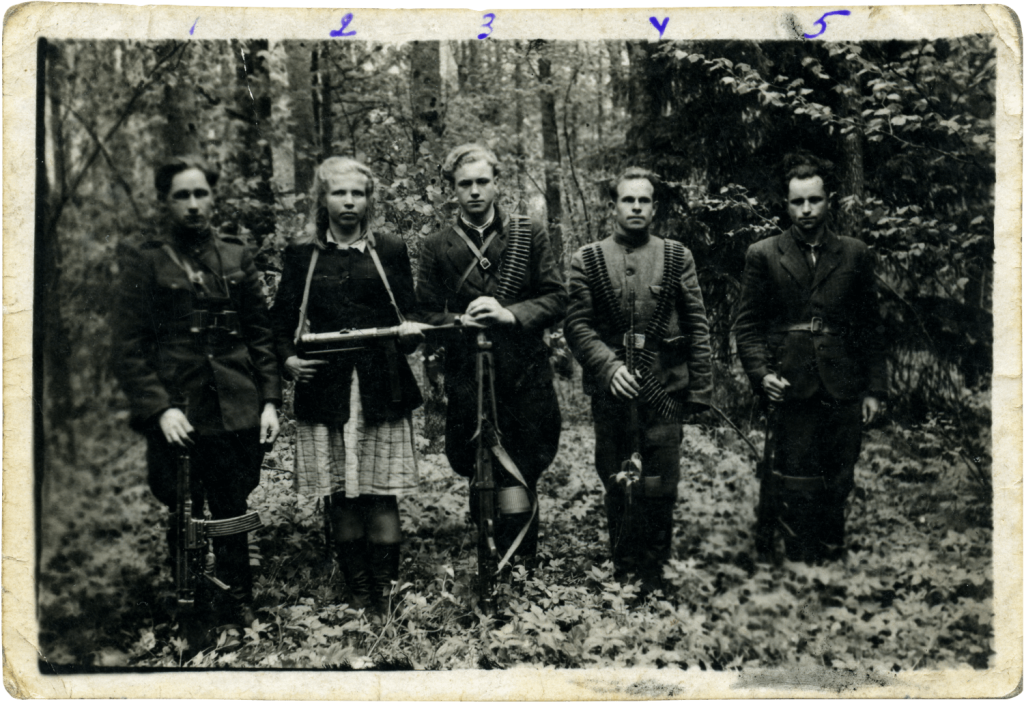Exhibition menu
Exhibition menu
"Silent" current
The Rebellion of Youth (1964–1991)
Prehistory
Man rebels in defending his being. Since Biblical times, he has opposed the old or new order or disorder. There has been rebellion against tyrants and democrats, subjugators and prophets. The most active and numerous participants in these outbreaks of humanity were young people. Lithuania was shaken by rebellions from the end of 18th century to the beginning of the 20th – the 1794 Kościuszko Uprising, the November Uprising of 1830– 1831, the January Uprising of 1863– 1864, the Russian Revolution of 1905, and the Lithuanian Wars of Independence in 1919-1920. Lithuanians rose up against powerful empires, laid down their heads, and sacrificed the fate of their loved ones in the name of the Fatherland and personal freedom. The fight ended in victory. In 1918, the nations living in Lithuania began to create an independent state that protected their vitality and matured consciousness – the Republic of Lithuania.
The majority of the armed resistance movement members were young people.
Partisans in the Birutė territorial unit of the Kęstutis Military District. From left: Stasys Milkintas-Riteris, Jadvyga Milkintienė-Rūta, Vincas Rutkauskas-Rambynas, Steponas Šležas, Juozas Milkintas-Maršalas.
Occupied Lithuania, no later than 1949. Photo author unknown (Lithuanian Special Archives)
Although Lithuania did not resist the aggression of the USSR with weapons on 15 June 1940, the majority of the population – especially the youth – met the actions of the occupiers, who were trying to destroy the state and enslave the spirit of the nation, with the greatest hatred. In public places, they sang the Lithuanian national anthem and patriotic songs instead of the Bolshevik “Internationale”, much to the chagrin of the occupiers. Despite the growing repression, young people celebrated national and religious holidays, raised Lithuanian flags, hung portraits of Lithuanian intellectuals in their homes, and laid wreaths for the nation’s heroes in cemeteries. Schoolchildren, paraphrasing well-known poems, mocked the authorities, hung portraits of communist idols upside down, told anti-Russian jokes, and refused to carry communist posters in forced demonstrations. Teachers refused to spy on their students and colleagues and report them to the Cheka. Patriotic sentiments did not subside in the army units that had not yet been disbanded. The occupation authorities put soldiers on trial for celebrating the Day of Restoration of the State of Lithuania and shot one of them on the spot. Young people distributed flyers, founded secret organisations, and actively participated in the underground press. From July 1940 to May 1941, Soviet intelligence – the NKVD – uncovered 75 underground organisations with a total of 36,000 members. Guided by premonitions of an impending clash between Nazi Germany and the communist USSR, the illegal resistance prepared to rebel. The 1941 June Uprising against the Soviet occupants could be called the Youth Uprising, because most of the rebels were young people.
The youth opposed the occupation policy of Nazi Germany and actively participated in the activities of secret resistance organisations, such as the Lithuanian Activist Front and the Union of Lithuanian Freedom Fighters. In their press, the movements discussed ideas for the restoration of Independent Lithuania and exposed the crimes of the Nazis; they sabotaged and boycotted their actions, and prepared to take up armed resistance against a new Soviet occupation. The aforementioned organisations helped to thwart the attempts of the occupying German authorities to create a Lithuanian SS military legion. When the Soviet occupation began in 1944, young people continued the struggle in underground organisations, which the partisans encouraged them to join. The Gediminas Squad, Young Lithuania, Into the Light, the Squad of Young Fighters for the Freedom of Lithuania and the other secret movements operating in almost every school acted like bridges connecting armed resistance with civilian life. Young people were partisan liaisons, scouts and members of the combat reserve, and contributed to the creation and distribution of patriotic press. Most of the participants in the armed resistance were also young people. Part of them became Forest Brothers after the Soviet authorities announced mobilisation into the Red Army. Not wanting to die on foreign fronts protecting the interests of the occupying state, they fled from slavery and gathered in forests or hid alone. From 1944 to 1953, at least 20,500 armed resistance fighters were killed. With their collaborators, the Red conquerors killed roughly 5,000 Red Army deserters and evaders (non-partisans). Thousands of men and women were tortured and died in Soviet Gulag labour camps or in exile. Their families rarely escaped repression – their homesteads were burned down, their property was confiscated, and they were sent into exile.
After Stalin’s death, with the partisan movement suppressed and the beginning of the Khrushchev Thaw in 1956, Lithuanian armed resistance to the occupation turned into silent resistance. The policy of spiritual destruction, denationalisation and Russian chauvinism cloaked in internationalism was opposed by establishing underground organisations, preparing and distributing illegal press, flyers and slogans, displaying prohibited patriotic symbols, reviving national and state traditions, promoting self-education, and creating literary and artistic works. There were 108 illegal youth resistance organisations and groups operating in 1954–1960. In an effort to break the spirit of the most active participants of these movements, the repressive apparatus of the regime persecuted them, put them on trial, and imprisoned them in Soviet labour camps. In 1955–1958 alone, 226 persons were arrested and convicted.
